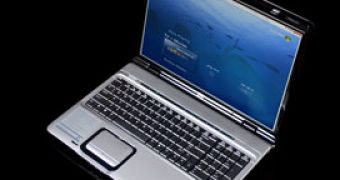At the Windows Hardware Engineering Conference (WinHEC) 2007 in Los Angeles, on May 15, Microsoft Chairman Bill Gates applauded approximately 40 million sold Windows Vista licenses. "We've really been amazed at the customer response," Gates stated. "What's happened in the last 100 days has been beyond our expectations. We've had nearly 40 million copies sold, and so that's twice as fast as the adoption of Windows XP, the last major release that we've had." The rapid adoption of the operating system has also translated into a consistent increase in the worldwide RAM sales.
The Semiconductor Industry Association (SIA) reported that worldwide chip sales jumped 2.4% in May 2007, compared with the same month of last year, totaling $20.3 billion. Kevin Kilback, a senior marketing manager with Micron Technology confirmed that Windows Vista is driving the sales of semiconductors and in particular of RAM, as cited by ComputerWorld.
"Worldwide sales of semiconductors rebounded slightly in May, after a sequential decline in April," said SIA President George Scalise. "Sales of microprocessors and NAND flash memory saw the largest sales increases, indicating continued strength in end markets for personal computers and cell phones. Average selling prices (ASPs) for DRAMs continued to be under competitive pressure, declining by nearly 14 percent sequentially. Total DRAM sales fell 8 percent even as unit shipments increased by 7 percent."
There is little secret over the fact that Windows Vista is a resource hog. Microsoft's latest operating system delivers its best performance in the vicinity of 4 GB of RAM. In this context, it is obvious that Vista has positively impacted sales of RAM. The only two editions of Windows Vista that feature only modest system requirements are Starter and Home Basic. Still, Microsoft has indicated that users have largely opted for the Home Premium and Ultimate editions.
"According to Micron Technology, the average DRAM content of a PC will increase from 772 MB last year to 1,180 MB this year - an increase of 53 percent. The embedded memory content of cell phones is growing even more dramatically: the NAND flash content of the typical cell phone is expected to grow at a compound annual rate of more than 200 percent through 2010. Despite severe price pressures on DRAMs and NAND flash, total sales of semiconductors for the first five months of 2007 increased by 3.1 percent from the same period of 2006," Scalise added.

 14 DAY TRIAL //
14 DAY TRIAL //